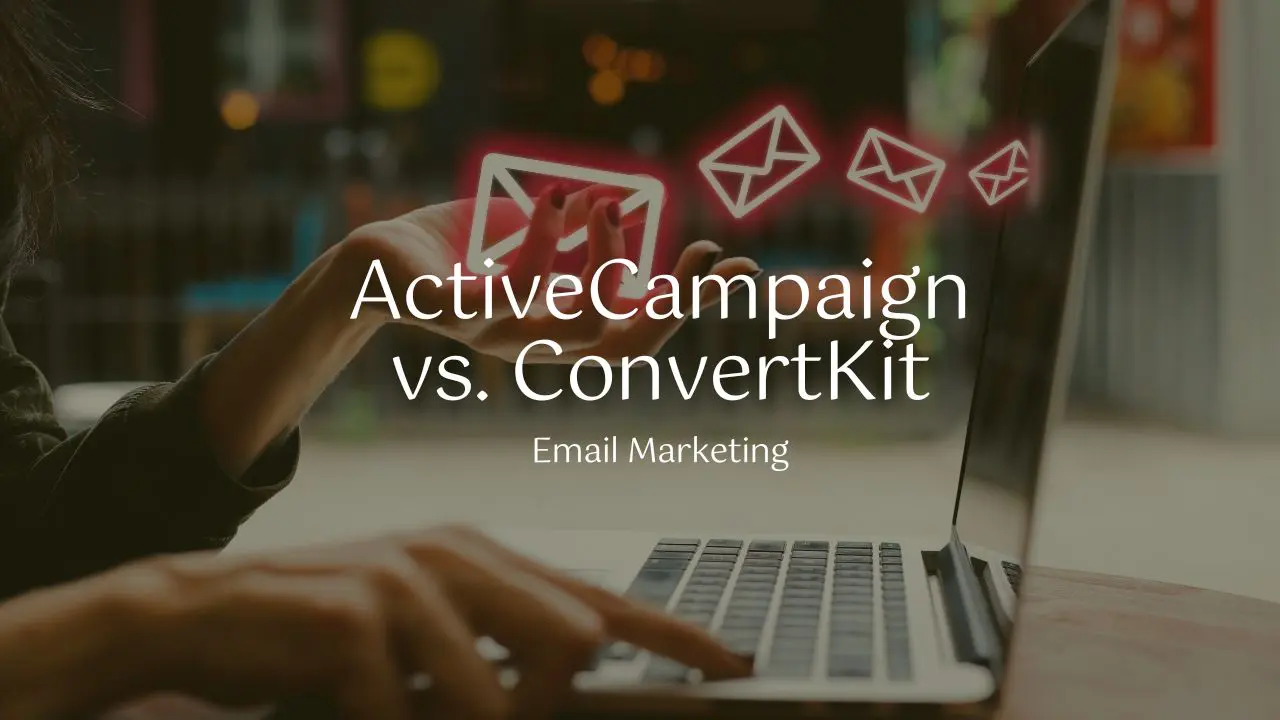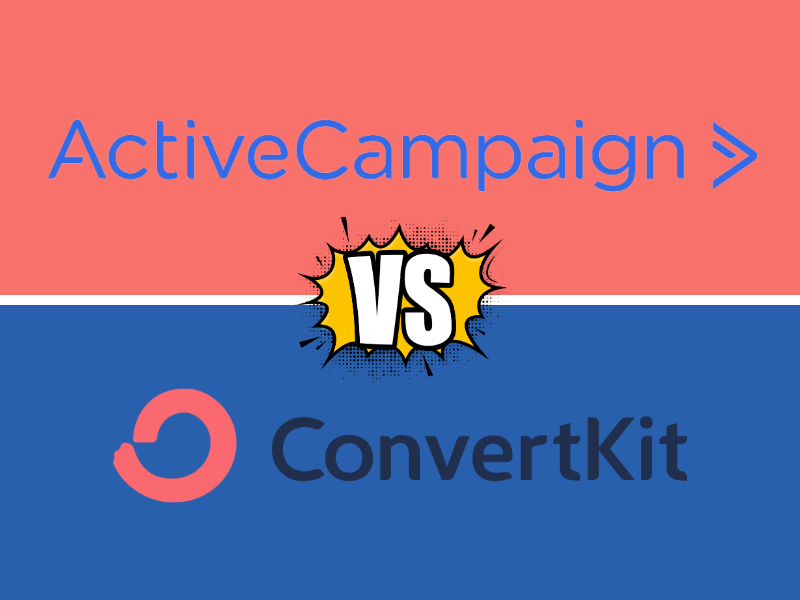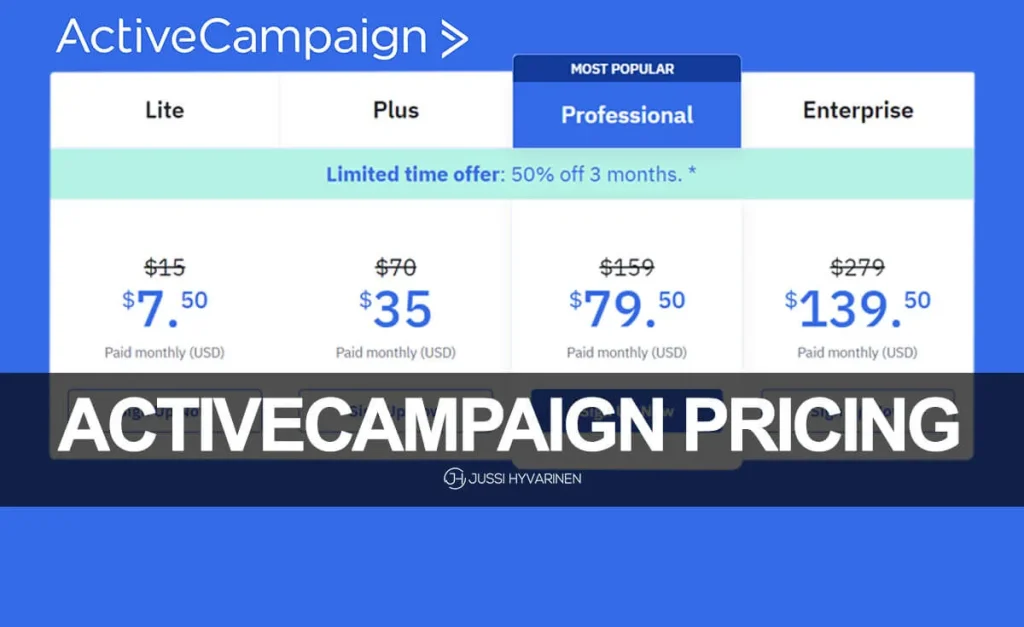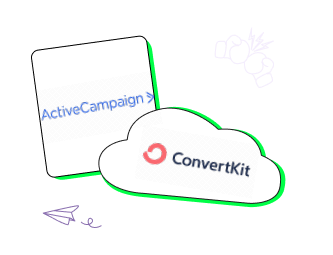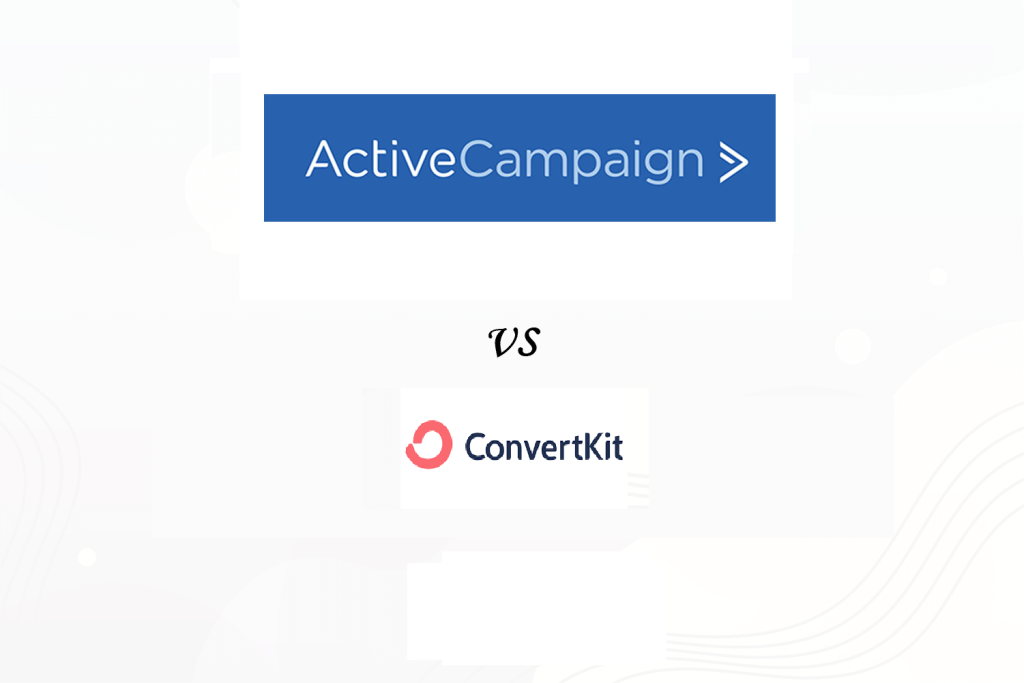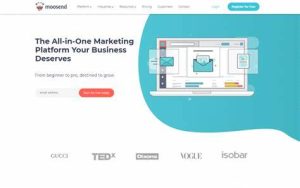In the world of email marketing, two platforms have emerged as leading contenders: ActiveCampaign vs ConvertKit. As businesses and marketers strive to find the right tool to power their email strategies, understanding the key differences between these two platforms is crucial.
Overview of ActiveCampaign and ConvertKit
ActiveCampaign is a comprehensive marketing automation and email marketing platform that offers a wide range of features, including advanced email automation, contact management, and CRM integration. ConvertKit, on the other hand, is a more specialized email marketing and automation platform, primarily focused on serving the needs of bloggers, creators, and small businesses.
Key Differences Between the Two Platforms
While both ActiveCampaign and ConvertKit are powerful email marketing tools, they differ in their target audience, feature sets, and overall approach to email marketing.
Email Marketing Features
Email Automation: Comparing Features and Capabilities
ActiveCampaign boasts a robust email automation engine, allowing users to create complex, multi-step automation workflows that are triggered by various user actions or criteria. ConvertKit, while also offering automation capabilities, tends to have a more streamlined and focused approach, catering more to the needs of smaller businesses and individual creators.
List Segmentation: How Each Platform Handles Segmentation
ActiveCampaign excels in its advanced list segmentation features, enabling users to create highly targeted and personalized email campaigns based on a wide range of customer data and behaviors. ConvertKit, on the other hand, takes a more straightforward approach to segmentation, focusing on subscriber tags and custom fields.
A/B Testing: Testing Different Email Variants
Both ActiveCampaign and ConvertKit offer A/B testing capabilities, allowing users to experiment with different email subject lines, content, and other elements to optimize their campaigns. However, ActiveCampaign’s A/B testing features are generally more sophisticated, providing more detailed analytics and insights.
Landing Page Builders: Built-in or Integrated Landing Page Tools
ActiveCampaign boasts a built-in landing page builder, enabling users to create high-converting landing pages directly within the platform. ConvertKit, on the other hand, relies on third-party landing page integrations, such as with LeadPages or Unbounce.
Contact Management
Contact Management Features: CRM Integration, Tagging, and Scoring
ActiveCampaign offers advanced contact management features, including CRM integration, complex tagging and segmentation, and lead scoring capabilities. ConvertKit, while still providing solid contact management tools, tends to have a more simplified approach focused on subscriber tags and custom fields.
Data Import/Export: Ease of Importing and Exporting Contacts
Both platforms make it relatively easy to import and export contact data, but ActiveCampaign may have a slight edge in terms of the available options and flexibility for data migration.
Automation and Workflows
Workflow Builders: Complexity and Ease of Use
ActiveCampaign’s workflow builder is known for its robust and versatile capabilities, allowing users to create highly complex automation sequences. ConvertKit’s automation workflows, while still powerful, tend to be more straightforward and user-friendly, making them a better fit for smaller businesses or individual creators.
Automation Triggers and Actions: Available Options
ActiveCampaign offers a wider range of automation triggers and actions, catering to more advanced use cases and data-driven marketing strategies. ConvertKit, on the other hand, focuses on a more curated set of automation options, prioritizing simplicity and ease of use.
Pricing and Plans
Pricing Tiers: Comparing Costs and Features
ActiveCampaign and ConvertKit both offer flexible pricing structures, with plans catering to businesses of various sizes and budgets. However, ActiveCampaign’s pricing tends to be more scalable, with a wider range of feature-rich plans, while ConvertKit is often seen as more cost-effective for smaller businesses or individual creators.
Value for Money: Analyzing Cost-Benefit Ratios
When comparing the overall value proposition, ActiveCampaign generally offers more features and capabilities per dollar, making it a strong contender for businesses looking to maximize their email marketing ROI. ConvertKit, on the other hand, may be a better fit for those prioritizing simplicity and cost-effectiveness.
Customer Support
Support Channels: Live Chat, Email, Phone
Both ActiveCampaign and ConvertKit provide comprehensive customer support through various channels, including email, live chat, and (in the case of ActiveCampaign) phone support. The quality and responsiveness of the support teams are generally well-regarded for both platforms.
Response Times: Comparing Support Quality and Speed
While both platforms are known for their responsive and knowledgeable customer support, ActiveCampaign may have a slight edge in terms of response times and the overall quality of support, based on user reviews and feedback.
Integrations
Third-Party Integrations: Available Integrations with Other Tools
ActiveCampaign boasts an extensive library of third-party integrations, allowing users to connect the platform with a wide range of other tools and applications, from CRM systems to e-commerce platforms. ConvertKit, while still offering a robust set of integrations, tends to have a more focused integration ecosystem, primarily catering to the needs of its core user base.
API Accessibility: Ease of Integrating with Custom Applications
Both ActiveCampaign and ConvertKit provide well-documented APIs, enabling users to build custom integrations and automate workflows between the platforms and their own applications. The relative ease of API integration may vary depending on the specific use case and technical requirements.
Ease of Use
User Interface: Comparing Design and Layout
ActiveCampaign is known for its clean, modern, and intuitive user interface, which is often praised for its accessibility and ease of use. ConvertKit, on the other hand, has a more streamlined and minimalist design, focusing on simplicity and ease of navigation.
Learning Curve: How Steep is the Learning Curve for Each Platform?
While both platforms are generally user-friendly, ConvertKit may have a slightly shallower learning curve, particularly for users with limited technical expertise or email marketing experience. ActiveCampaign, with its more robust feature set, may require a bit more time and effort to master.
Scalability
Handling Growth: Can the Platforms Scale with Your Business?
ActiveCampaign is widely regarded as a highly scalable platform, able to accommodate the needs of businesses as they grow and their email marketing requirements become more complex. ConvertKit, while still capable of scaling, may be better suited for smaller businesses or individual creators with more modest email marketing needs.
Performance: How Do the Platforms Perform Under Load?
Both ActiveCampaign and ConvertKit are known for their reliable performance and the ability to handle large email lists and high-volume campaigns. However, ActiveCampaign may have a slight edge in terms of its ability to maintain consistent performance and deliverability under heavy load.
Specific Use Cases
E-commerce Businesses: Which Platform is Better for E-commerce?
For e-commerce businesses, ActiveCampaign may be the better choice, thanks to its robust CRM integration, advanced segmentation capabilities, and specialized features for managing customer data and driving sales.
Small Businesses: Which Platform is More Suitable for Small Businesses?
ConvertKit is often seen as a more suitable option for small businesses or individual entrepreneurs, as its streamlined approach and user-friendly interface can be a better fit for those with limited time or technical expertise.
Agencies: Which Platform is Better for Agencies?
ActiveCampaign may be the preferred choice for agencies, as its more comprehensive feature set, advanced automation capabilities, and client management tools can help agencies better serve their clients and deliver more effective email marketing campaigns.
10 FAQs
1. What are the key differences between ActiveCampaign and ConvertKit?
The main differences lie in their target audiences, feature sets, and overall approach to email marketing. ActiveCampaign offers a more comprehensive marketing automation platform, while ConvertKit is more specialized for creators and small businesses.
2. Which platform has more advanced email automation capabilities?
ActiveCampaign generally has more robust and versatile email automation features, allowing for the creation of complex, multi-step workflows and automation sequences.
3. How do the contact management and segmentation capabilities compare between the two platforms?
ActiveCampaign offers more advanced contact management features, including CRM integration, lead scoring, and complex segmentation. ConvertKit focuses more on simpler tagging and custom field-based segmentation.
4. Which platform has a better landing page builder?
ActiveCampaign has a built-in landing page builder, while ConvertKit relies on third-party integrations for landing page creation.
5. How do the pricing and cost-benefit ratios compare between ActiveCampaign and ConvertKit?
ActiveCampaign typically offers more features and capabilities per dollar, making it a better value proposition for businesses looking to maximize their email marketing ROI. ConvertKit may be more cost-effective for smaller businesses or individual creators.
6. How do the customer support experiences differ between the two platforms?
Both platforms are known for providing responsive and knowledgeable customer support, but ActiveCampaign may have a slight edge in terms of response times and overall support quality.
7. Which platform has a more user-friendly interface and easier learning curve?
ConvertKit is generally considered to have a more straightforward and easier-to-use interface, with a shallower learning curve, especially for those with limited technical expertise.
8. How do the platforms perform in terms of scalability and handling business growth?
ActiveCampaign is widely regarded as a more scalable platform, able to accommodate the needs of businesses as they grow and their email marketing requirements become more complex.
9. Which platform is better suited for e-commerce businesses?
ActiveCampaign’s robust CRM integration, advanced segmentation capabilities, and specialized e-commerce features make it a better choice for e-commerce businesses.
10. Which platform is more suitable for small businesses or individual creators?
ConvertKit’s streamlined approach and user-friendly interface may make it a better fit for small businesses or individual entrepreneurs, particularly those with limited time or technical expertise.
Get Started with ActiveCampaign
To get started with ActiveCampaign, you can sign up for a free trial on the platform’s website (www.activecampaign.com). The sign-up process is straightforward and only requires a few basic details, such as your name, email address, and business information.
Once you’ve signed up, you’ll be prompted to complete a brief onboarding process, which includes setting up your account, importing your contact lists, and customizing your email templates and landing pages. The platform’s user-friendly interface and comprehensive documentation make it easy to navigate and start leveraging ActiveCampaign’s powerful features.
Get Started with ConvertKit
To get started with ConvertKit, you can visit the platform’s website (www.convertkit.com) and click on the “Sign Up” button. The sign-up process is quick and simple, requiring you to provide your basic contact information and set up your account.
After signing up, you’ll be guided through a short onboarding process, where you can import your email list, create your first email campaign, and explore the platform’s features and functionalities. ConvertKit’s intuitive interface and streamlined approach make it easy for users, especially those new to email marketing, to get started and start building their subscriber base.
Conclusion
When it comes to choosing between ActiveCampaign and ConvertKit for your email marketing needs, there is no one-size-fits-all solution. The choice ultimately depends on your specific business requirements, the complexity of your email marketing strategies, and the level of automation and personalization you require.
If you’re looking for a comprehensive marketing automation platform with advanced features, robust contact management capabilities, and a scalable solution to support your business growth, ActiveCampaign may be the better choice. However, if you’re a smaller business or individual creator seeking a more streamlined and user-friendly email marketing platform, ConvertKit could be the more suitable option.
Ultimately, the decision should be based on a thorough evaluation of your business goals, the features and capabilities that are most important to you, and your budget. By understanding the key differences between these two platforms, you can make an informed decision that will help you maximize your email marketing ROI and drive success for your business.

